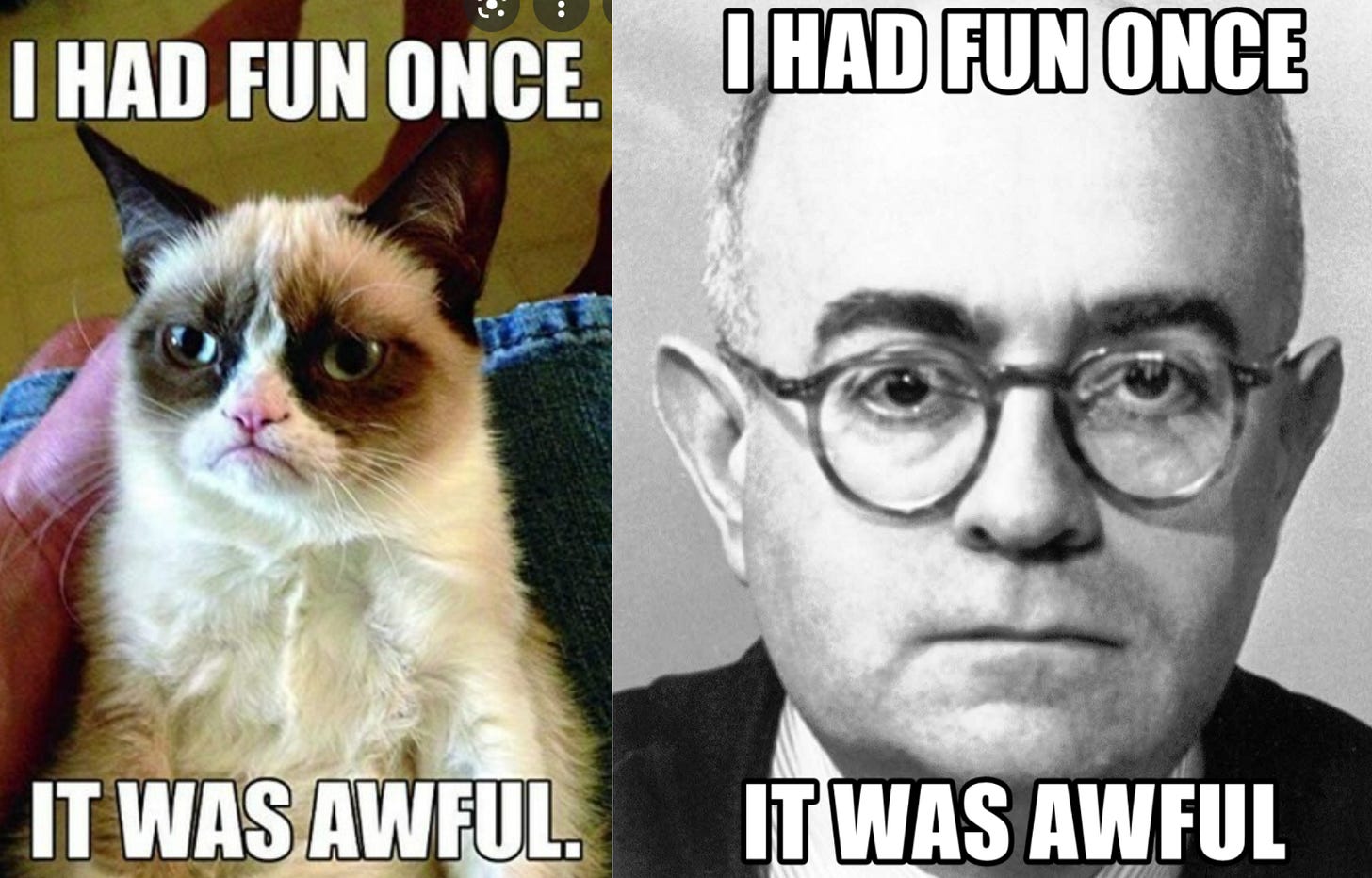70. 💌 don't write alone 💌
thinking about letters to friends and imagining otherwise
Hello, and happy Monday.
Last week I was able to get my COVID booster shot, so I celebrated with enchiladas. It really is the little things, isn't it?
In other news, I highly recommend each and every photo/meme dump from adrienne maree brown's Instagram. Do not sleep on these absolute treasures. 💗
✏️ Still processing.

When I began my work on Monday morning, I felt like I was just spinning my wheels.
For the past two months, I've been journaling and brainstorming around how I want to organize my manuscript. This has involved re-reading my dissertation, x-raying my dissertation, free-writing, mind-mapping, reading other people's work, sitting and staring at my bookshelf, and eating croissants from Tatte. These activities have mostly been done in my office, where it seems like few folks have been working these days.
It makes sense, then, that the words I've written have mostly been addressed to myself. My audience is me at this stage, as I am presumably the only one who will read these nascent forms of my ideas. So, I began Monday's workday by journaling incoherently and writing in circles about the stakes of my book, its organization, and ultimately its contents. It didn't feel good. It felt...mushy. It felt like I was trying to write to a destination that was constantly moving away from me. If I sped up my typing, the words would come out jumbled. When I slowed down, I'd forget the trajectory of my thought. I guess it felt like I had hit a nail in the road somewhere, and my tires were slowly beginning to lag under my weight.
That evening, I had a talk with someone in my field, M, who I really admire. M is currently tenure-track at an amazing institution, and her first book is coming out fairly soon. As I relayed to her my anxieties over the macro-considerations of the manuscript, M shared with me that these questions were something that all scholars had felt when trying to pivot from the dissertation to the book. She assured me that it takes time.
In talking with M, I realized how good it felt to talk with someone about the obstacles I keep coming up against around organization and structure. I asked if it would be possible to meet with her another time to discuss these questions more in depth; would it be ok if I sent her the book proposal I wrote last year (based on the structure of my dissertation), and then a brief outline of my new chapter breakdown and where I see it changing? M agreed, and the next morning, I began the work of writing that outline.
What I thought would merely be one-page document briefly annotating my table of contents turned into a 5-page letter to M. I detailed the particular aspects of my manuscript that I wanted to narrow from my dissertation (time period, major players, periodization). I described why I wanted these elements to change. I wrote my table of contents and then I wrote a paragraph on each, talking about the argument I wanted to get across, what sources I'd use, what the approximate time period is. I articulated the stakes of these changes—of why this story matters in the way that I want to tell it now. It was starting to make sense. To come together.
While I am sure that the (seemingly endless) journaling, thinking, etc. I've done these past few months gave me the clarity to articulate my claims and ideas, I really attribute this change to the fact that I wrote "Dear M," at the beginning of the document. Finally, I had an audience for these nascent thoughts that was outside of my own mind. That I could re-frame these ideas into a digestible form was made necessary by my need to communicate them to someone else.
I've come to realize that this act of writing to someone else is precisely what I needed to get my ideas unstuck and legible. I've already stored the exercise away in my toolbox, and who knows, I might use it next week when I work on my article.
In writing this week & last week's letters, I am beginning to see a pattern in my writing practice emerge: one that centers community. As a result, I'm taking matters into my own hands and cultivating community where I can in my daily writing. What does this look like, you may ask? Well, that's for next week's newsletter. 🥰
📚 Still reading.
Kapadia, Ronak K. Insurgent Aesthetics: Security and the Queer Life of the Forever War. Durham: Duke University Press, 2009.
Lately, I've been thinking about queer of color critique. Muñoz's work that I read a few weeks ago as made me all the more invested exploring in the relationship between queerness and racialization of minoritarian subjects. It was only a matter of time, then, that I picked up Kapadia's work on diasporic visual and expressive culture by Muslim, Arab, and South Asian artists in the post-9/11 era.
Kapadia's work lies at the intersection of security, empire, and race in the "forever war," which signifies the permanent war on terror that has come to define the last two decades. In the post-9/11 era, US counterinsurgency movements, drone strikes, surveillance, and a whole host of other securitization tactics have caused the destruction of ways of life, connection, and community for those living in Southwest Asia, North Africa, South Asia, and other Muslim countries. From this destruction, Kapadia explores how Arab, South Asian, and Muslim contemporary artists create work that engages the senses as a way of thinking and communing beyond imperial violence. Through performance, installation, film, etc., these diasporic artists practice an "insurgent aesthetic," where they envision alternative ways of understanding and being in the world in the forever war. Kapadia sees their artistic practice as employing a "queer calculus" from which US militarism is illuminated anew and collective futures can be visioned.
Put very simply, I read this as a book full of hope.
I am someone for whom "doom & gloom" comes very naturally when I think about the workings of the national security state. (A small aside: I remember someone trying to describe the scholars of the Frankfurt School and their respective vibes to me—Adorno's vibe is grumpy cat. At times, my vibe is also grumpy cat.)

It's sometimes difficult for me to see beyond the destruction—to imagine otherwise. (I also want to acknowledge that this imagining is rooted in the tradition of Afrofuturism. I haven’t read enough of this tradition to write on it, but I just want to make sure that it was said.) It's also difficult to do this when I know that this present violence is historically embedded. Kapadia writes:
When we understand the US forever war not as exceptional but as part of a global, neoliberal racial regime firmly rooted in the history of settler colonialism and racial capitalism, we begin to see some instructive parallels and relationships. The ideological threat and material practice of (national) security and terror upon multiple, overlapping populations stretches from territorial expansions, internal frontier wars, chattel slavery, settlement, and genocides in the eighteenth and nineteenth centuries to annexation wars in the Pacific and the Caribbean in the late nineteenth century; and transitions from European colonial domination to the ascendance of the US onto the world stage in the twentieth century, along with unending wars in Asia and the Pacific in the period after World War II; counterinsurgent interventions against left-leaning movements in Africa, Central America, and Indochina throughout the Cold War; and the cultivation of pro-American autocrats and CIA-sponsored proxy wars and political terror in Latin America, Africa, and the Middle East; through to post-Cold War militarized humanitarian interventionism and twenty-first-century renovations of overt militarized invasion, occupation, and counterterrorism in the Great Middle East. (36)
But we mustn't stop there. I read Kapadia like I read Muñoz—full of hope. (Read: the opposite of grumpy cat.) That despite the crushing power of imperial violence upon a land that is tied to me through blood, there is a way to see—to feel—connection and communion with one another. He continues:
Insurgent Aesthetics reveals how diasporic art and expressive culture can make available new ways of knowing, sensing, and feeling that were once thought to be unintelligible or unimaginable. An analysis of insurgent aesthetics offers a moment of refreshment—an opportunity to think antiracist, anti-imperialist queer feminist politics anew. It lets us move beyond the states supreme calculus of security and carcerality to propose urgently needed alternatives to US empire. (43)
🌀 Still consuming.
In the bookshop:
Currently Reading: Detransition, Baby by Torrey Peters
On Deck: Wild Seed by Octavia Butler
🚨 Calling all Bay Area zinesters! Check out the opportunity above! 🚨(h/t Moments Cooperative in Oakland CA)
Speaking of not writing alone, did you know that Catapult has a whole section dedicated to just that on their website?
Scholars talk about their writing process—a column from the Chronicle.
📖 Book club corner.
For November's book club, we will be reading Hola Papi by John Paul Brammer! Thank you to everyone who voted, and feel free to purchase a copy of the book here! Details are below.
Here’s the event info:
Date & Time: Tuesday, November 30 @ 5PM PST/8PM EST
Registration Link!
Suggested Donation (for those able to donate): $3-10 through Paypal or Venmo (@idyalz)
🐶 A pup-date.
Girlie's been doing really well on her walks lately. Here she is giving off a smolder:
As always, thanks so much for reading through, and I'll see you in the next one!
Warmly,
Ida






